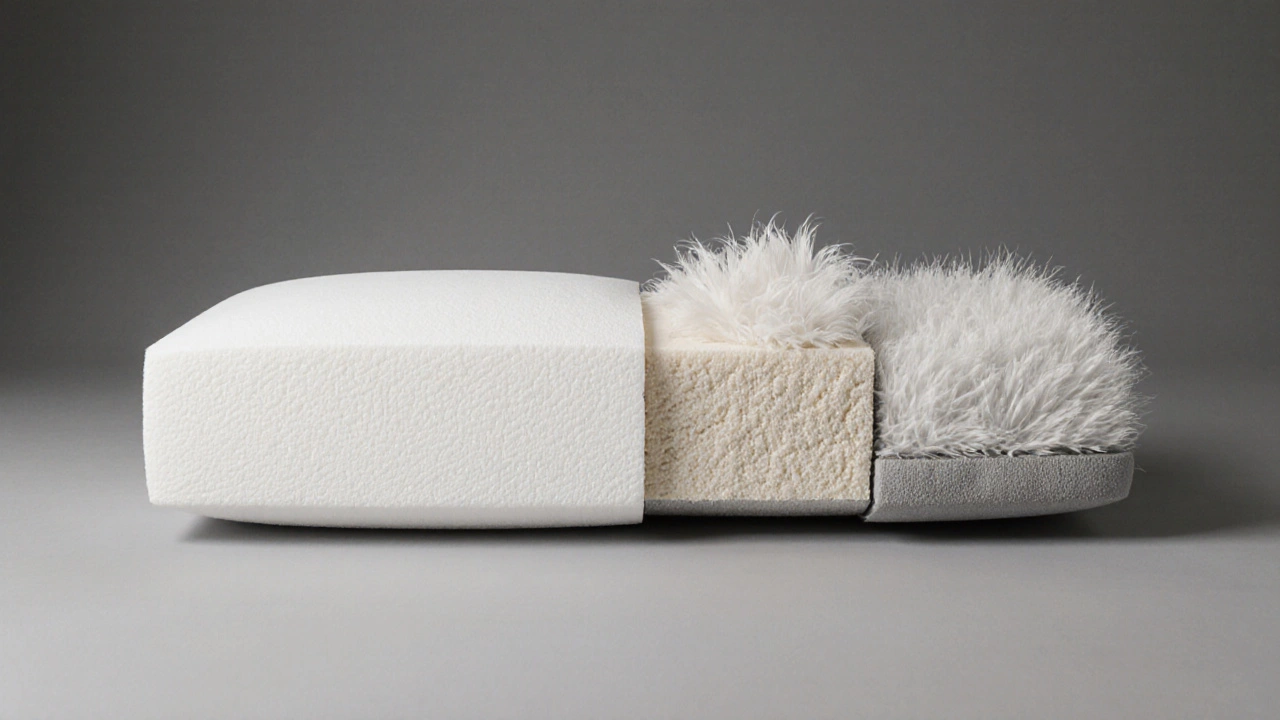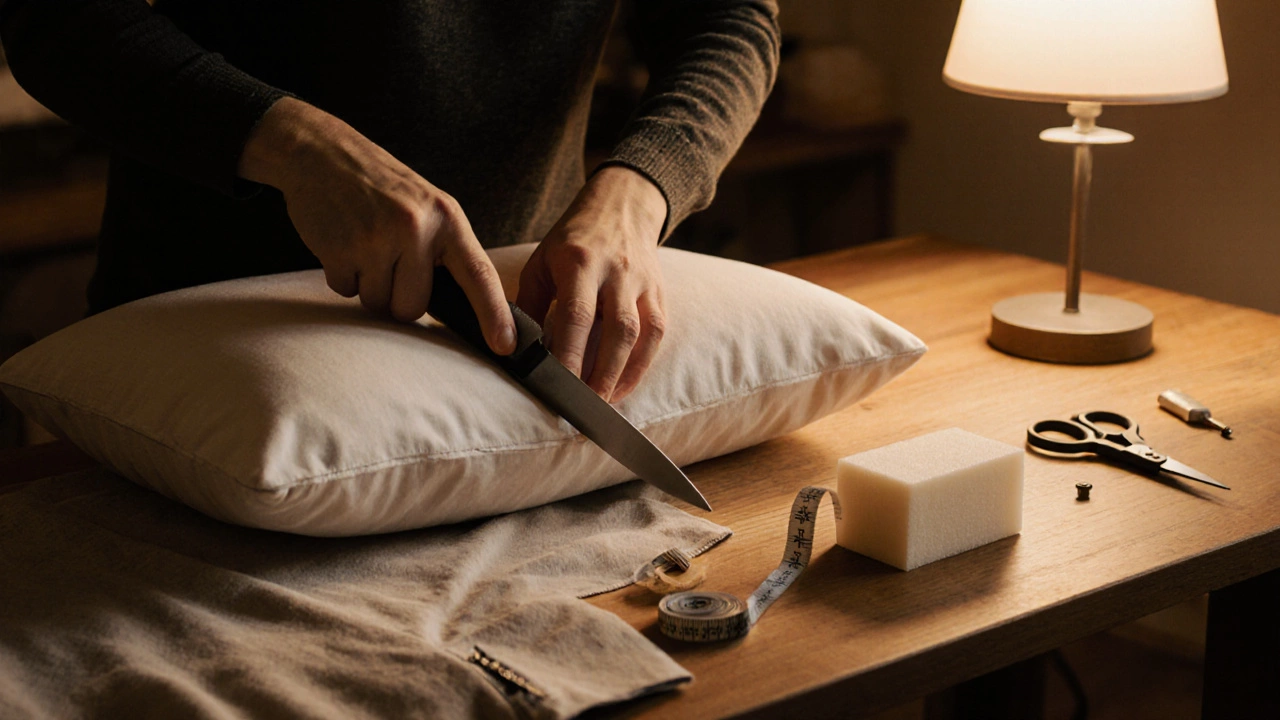Sofa Cushion Replacement Calculator
How often should you replace your cushions?
Get a personalized estimate based on your sofa's specific conditions.
Higher density foam lasts longer but may feel firmer
More users and frequent use accelerates wear
UV rays degrade foam and fabric over time
High humidity causes feather clumping and fiber breakdown
Estimated Replacement Timeline
Enter your details to see when to replace cushions
Based on your sofa's conditions and typical lifespan data
When the comfort of your favorite spot starts to sag, the first thing you question is the state of your sofa cushions. Knowing exactly how often to swap them out saves you money, keeps your living room looking fresh, and prevents backaches. Below is a straightforward roadmap that walks you through the signs, the timing, and the best ways to give your sofa a new lease on life.
Why Cushion Lifespan Matters
Sofa cushions are the soft core that bridges a sofa’s frame and the user’s body. They provide comfort, shape, and support, turning a hard frame into a welcoming place to relax. Over time, the fill loses its resilience, the cover frays, and the overall look drifts from showroom‑perfect to tired. Replacing cushions at the right interval prevents uneven seating, protects the upholstery from premature wear, and helps maintain resale value.
Factors That Affect Cushion Durability
Several variables dictate how long a cushion stays comfy:
- Foam A dense polymer material often used for the core support - higher density means slower compression but can become hard if exposed to heat.
- Feather fill Lightweight, plush stuffing that offers a sink‑in feel - prone to flattening and clumping, especially in humid climates.
- Polyester fiber Synthetic fibers that mimic down, often blended with foam - affordable but can lose loft after a few years.
- Usage frequency - a family sofa sees more cycles than a rarely used guest set.
- Sun exposure - UV rays break down foam cells and fade fabric.
- Humidity - high moisture accelerates feather and fiber breakdown.

Common Fill Types and Their Typical Lifespan
Choosing the right fill for your lifestyle can extend the time between replacements. Below is a quick comparison:
| Fill Type | Typical Lifespan (years) | Pros | Cons |
|---|---|---|---|
| High‑density foam | 8‑12 | Firm support, retains shape, low maintenance | Can feel hard, less plush |
| Medium‑density foam | 5‑8 | Balanced comfort, lighter weight | May sag sooner under heavy use |
| Feather fill | 3‑5 | Very soft, luxurious feel | Requires regular fluffing, sensitive to humidity |
| Polyester fiber | 4‑6 | Cost‑effective, hypoallergenic | Can flatten quickly, less durability |
Signs It’s Time to Replace Your Cushions
Even if you haven’t hit the average lifespan, visual and tactile cues can tell you a cushion is ready for retirement. Use this checklist:
- Noticeable sagging or uneven height when seated. \n
- Permanent indentations that don’t bounce back after a few minutes.
- Visible lumps, clumps, or cold spots - especially common with feather or polyester fills.
- Cover fabric showing wear, fraying, or stains that won’t lift.
- Unpleasant odors that linger despite cleaning (often a sign of moisture buildup).

How to Replace Cushions: DIY vs. Professional
Depending on your comfort with tools and upholstery, you can either swap out cushions yourself or hire a specialist. Here’s a step‑by‑step for the DIY route:
- Measure the existing cushion dimensions - length, width, and thickness.
- Choose a fill that matches your desired firmness and the sofa’s usage pattern.
- Purchase a new cushion cover A removable fabric sleeve that slides over the fill that fits your interior style.
- Insert the fill into the cover, distributing it evenly. For foam, cut to size with a sharp utility knife.
- Zip or sew the cover closed, then position the cushion on the frame. Align any tie‑backs or straps to secure it.
- Step back, sit, and test for even support. Adjust as needed.
If you prefer a seamless look or have a complex cushion shape, a professional upholsterer can handle custom foam densities, tufting, and re‑upholstering the upholstery The outer fabric that defines a sofa’s aesthetic without damaging the frame.
Extending Cushion Life: Maintenance Tips
Regular care can push your replacement schedule farther:
- Rotate cushions every 2‑3 months to prevent uneven wear.
- Vacuum the cover weekly to remove dust that can degrade fibers.
- Spot‑clean spills immediately with a mild detergent; avoid soaking the fill.
- Use a dehumidifier in damp climates to keep humidity Moisture level in indoor air that affects cushion materials at bay.
- Place cushions away from direct sunlight or use window treatments to limit UV exposure.
By combining these habits with periodic inspections, you’ll know exactly when a cushion truly needs replacing rather than just a quick fluff.
How often should high‑density foam cushions be replaced?
Typically every 8‑12 years, but factors like sun exposure and usage can shorten that window.
Can I mix foam with feather fill for better comfort?
Yes, a hybrid blend offers firm support plus a soft top layer, extending the overall lifespan to about 6‑8 years.
What’s the cheapest way to refresh old cushions?
Buy new foam inserts and a slipcover. This DIY fix can rejuvenate a sofa for under $100.
Do cushion covers need to be removed to clean them?
If the cover has a zip, remove it for machine washing. Otherwise, spot‑clean with a damp cloth.
Will humidity affect feather‑filled cushions?
High humidity can cause feathers to clump and develop mildew, so keep the room's moisture below 60%.


